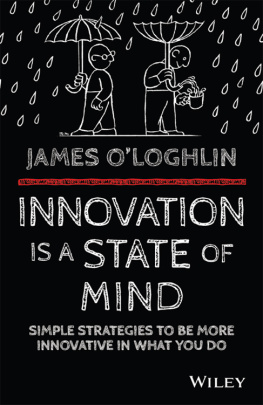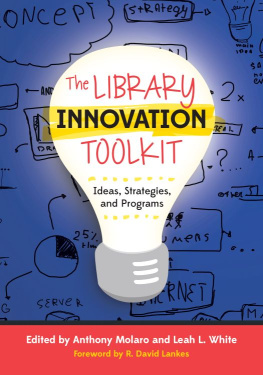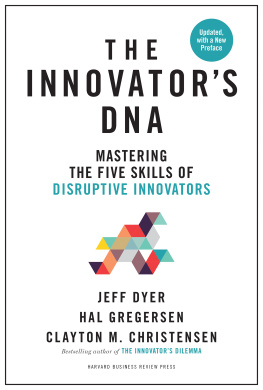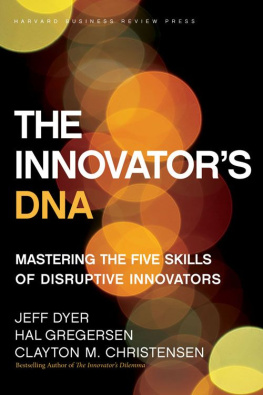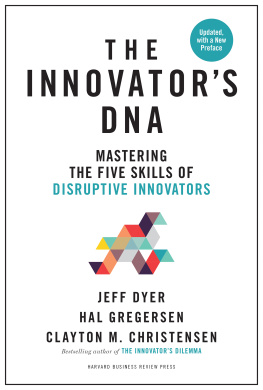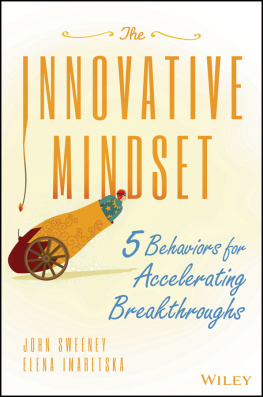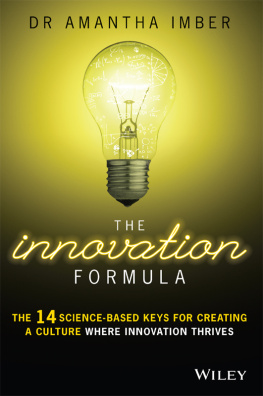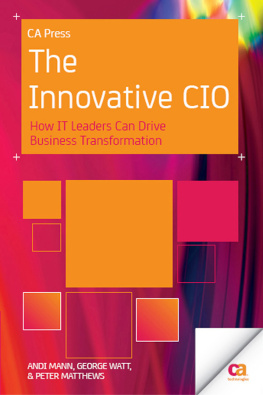Conclusion:
The adventure of innovation
I once had a boss who gave me a task. I worked really hard and finished most of it, but there was one thing I didn't understand. I went into his office, told him my problem and asked him if he could explain it.
No,' he replied.
Oh,' I said, taken aback. Umm, why not?'
Because you haven't thought about it.'
Yes, I have.'
Well, think about it some more,' he said.
I retreated to my office and felt sorry for myself. Then I started to think about the thing I didn't understand. I thought and thought and thought, and eventually I figured it out. I realised that I hadn't really tried very hard to work it out for myself before giving up and asking my boss. He had been right when he said I hadn't thought about it, and instead of spoon-feeding me, he had called me out on my intellectual laziness.
I learned two valuable lessons that day. One was that often, when we feel like we are working really hard, we are not actually thinking that hard at all.
The second was that when we do take a few moments to step back and really start thinking, we can solve many of our problems.
Innovation isn't easy. But it's not something that only geniuses can do, either. When it comes to innovation (and many other things) brilliance is overrated, and determination and hard work are underrated.
For the most part, I have argued that you should try to be innovative because it will be good for your business, but there's another reason that innovation is a good thing to do.
It's an adventure.
As a result of human innovation, the lives of many of us today are safer and more comfortable than human lives have ever been. That's great, but perhaps one result is that it's a bit harder to have adventures than it used to be. Back in the old days, when we humans had to go out and hunt for food, every day was an adventure. Now things are more predictable.
Every innovator is on an adventure. The adventure of ideas. They start with a thought, and then they take that idea out of their head and into the world to see how big they can grow it. It is a challenge and a test. It's not easy, but it is exciting, and rarely dull. It's good for us.
There are many reasons why innovation is good business, but it can also be good life. I hope you decide to embark on the adventure of innovation.
Notes
In writing this book, I have drawn on various blog posts and articles I have written over the years, and on keynote presentations I have given on innovation. Other sources include the following.
Preface
Information about the original ABC-TV series The Inventors was obtained from the Australian Screen website.
Throughout the book, information about the inventors and inventions that appeared on The New Inventors came from three sources: my own memory, my notes and the show's own website, accessed through abc.net.au. The website survives to this day (or at least to the date of publication) and has lots of information about all the featured inventors and their inventions so, if you are curious, browse away. There's some great stuff there.
Introduction
Check online for the many definitions of innovation, invention, innovator and inventor.
Chapter 1
I heard Professor Rosabeth Moss Kantor talk about habitual thinking (and many other things) at the Australian Chambers Business Congress in Melbourne on 16 August 2012.
Question everything
The story of Suvir Merchandani and the costs of printer's ink can be found by searching for:
India teen tells US how to save $400 million by changing font'
Source: The Hindu
Suvir Mirchandani tells US government how to save 240m just by changing their font'
Source: The Independent
What assumptions are you making?
Information on how Air Canada and IBM enabled customers to view the airline's content on their own device can be found by searching for:
Air Canada rouge soars ahead with wireless in-flight entertainment service'
Source: IBM
Is the answer in your data?
The story of Tacoma Zoo analysing weather and attendance can be found by searching for:
How a Tacoma Zoo Improved Staffing, Visitor Experience with Big Data'
Source: Building a Smarter Planet
Information on Cincinnati Zoo's analysis of how its visitors spent money is collected in:
Business Intelligence Helps the Cincinnati Zoo Work Smarter',
Source: Essentials of Management Information Systems 11th edn, ch. 11, case 4 by Kenneth C. Laudon and Jane P. Laudon (via course materials from Mercer University)
Upworthy's analysis of its readers' habits is discussed in:
How Upworthy is using data to move beyond clickbait and curation'
Source: NiemanLab
I became aware of enLighten through my involvement with the Australian Cleantech Competition (later the Australian Technologies Competition), run by that great champion of Australian innovation John O'Brien. Steve Cahill, the CEO of enLighten Australia, kindly reviewed the section on the company.
Think like a customer or client
I first heard of Meat Pack from technology entrepreneur and speaker Mick Luibinskis. The story of Meat Pack's Hijack campaign is found on the thinkwithgoogle website.
Plan for failure
Information on why there are ashtrays in planes is found in:
Why Airplanes Still Have Ashtrays in the Bathrooms'
Source: Gizmodo
Why aeroplanes still have ashtrays in the bathroom'
Source: Business Insider Australia
If You Can't Smoke on Planes, Why Are There Still Ashtrays?'
Source: Mental Floss
Get bored
Dr Sandi Mann and Rebekah Cadman's study on the relationship between boredom and creativity is found in:
Does Being Bored Make Us More Creative?'
Source: Creativity Research Journal, vol. 26, no. 2, 2014
Chapter 3
The idea of failing quickly and cheaply has been around for a while. I first heard about it from technology entrepreneur and speaker Mick Luibinskis.
Information on WD-40 was from:
John S. Barry, Main Force Behind WD-40, Dies at 84'
Source: New York Times
Chapter 4
Some of the ideas and concepts in this chapter appear in my book Umm... a CompleteGuide to Public Speaking (Allen & Unwin) and/or have been developed from various pitching and public speaking workshops I have conducted.
Chapter 5
Some of the ideas and concepts in this chapter appear in my previous books and articles, particularly How to Balance your Life (Allen & Unwin).
Chapter 7
Information about Google's 20 per cent innovation time was found at:
Google's staff now too busy for 20% time off perk, claim former employees'
Source: Daily Mail Australia
Google's Best New Innovation: Rules Around 20% Time
Source: Forbes, http://www.20timeineducation.com/
Google's 20 percent time in action'
Source: Google Official Blog
Acknowledgements
Leanne Christie made me do it! Leanne encouraged me to write this book, and kept at it until I agreed to do it. She is a big-hearted powerhouse who is full of great advice. Thanks! Thank you to everyone else at Ode Management, especially those who helped me with many of the ideas that appear in this book, including Heidi Gregory, Lauren Kelly, Julie Winterbottom and Fiona Pascoe.
Thanks to Phil Ryan and my father Graham for reading an early draft and providing helpful and excellent feedback that didn't make me cry. Many of their suggestions have been incorporated into the book.

